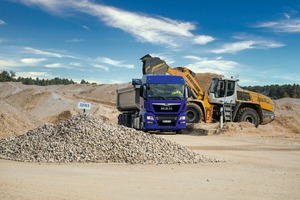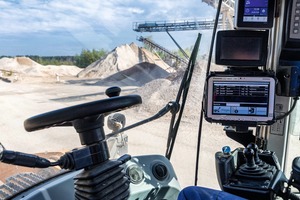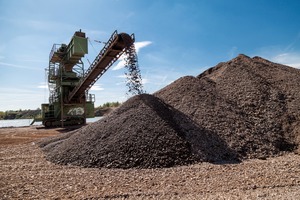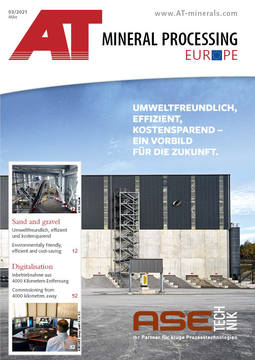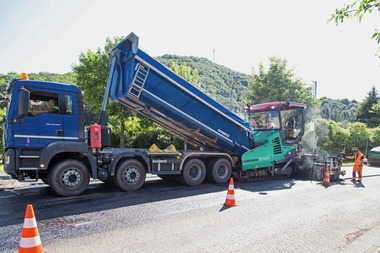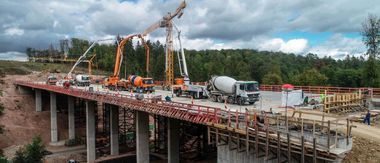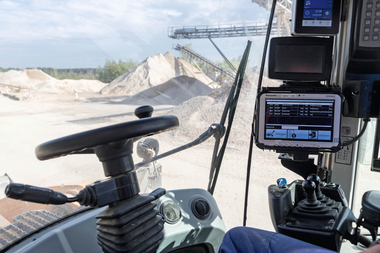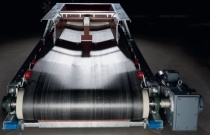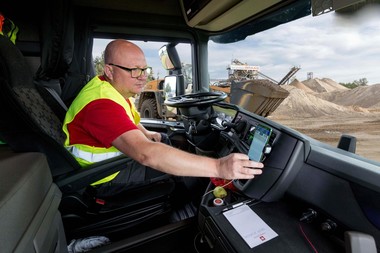Digitalisation is on the rise
If you don’t align your company with the future today, you will fall by the wayside at some point.” This guiding principle, uttered in 2019 by the authorized signatory of a well-known gravel and concrete company in the middle of Germany, probably sums it up best: no one will be able to avoid digitizing corporate processes. “At the same time, it is not at all necessary to completely convert everything in one fell swoop. In many cases, it is even better to proceed step by step.” This is the experience of Beate Volkmann, board member of PRAXIS EDV-Betriebswirtschaft- und Software-Entwicklung AG.
According to Beate Volkmann, there is a lot of potential for optimization and ultimately cost savings, for example, in the important area surrounding the sale and loading of building materials. In practice, there is often a confusing mixture of analog and existing digital processes. Paper delivery bills and customer agreements made by telephone are often found alongside individual digital solutions, for example in vehicle and merchandise control.
Here, a standardized, customized solution can be created with manageable effort and over several clearly planned and analyzed steps. The goal here is to digitize the analog processes that are still in place, combine them with the apps that are already available, and thus create a convenient and easy-to-use overall system.
The necessary modules are usually already available
No one need to have any concern about this. Beate Volkmann reassures that practical implementation is often easier than expected, since the sensor technology required for the necessary integrations and adaptation needs to the individual process, such as complete vehicle control, commercial processing and electronic receipts, as well as data structures, are often already available. Missing modules could easily be added and integrated. The field of action to be optimized includes not only the deployment control of the company’s own or external transport vehicles, wheel loaders, scales, silos and mixers, but also effective quantity management of the stored construction materials.
The scenarios in practice can look different. However, some basic requirements must be met. “These include, for example, automatic identification of the trucks and details of which material it is to deliver to which construction site for which customer.” Here, logistics apps are often already in use that provide the driver with data and information and also make it available to the building materials supplier right away, explains Beate Volkmann. This information is then also available online via a company cloud directly to all other parties involved – such as central or decentralized scheduling and the plant where the material is picked up. Electronic delivery bills and receipts as well as paperless invoicing and archiving are then no longer a problem. This also makes loading very fast, as the wheel loader driver immediately knows which vehicle has to be loaded with which material and when.
On the construction site, those responsible there also have an overview at all times via a site manager app of where their delivery vehicles are and when they are expected to arrive at the construction site. Any disruptions in loading or delays due to traffic jams are communicated immediately. When the vehicle and material arrive at the construction site, the delivery bill can be released for signature and electronically signed by the customer’s receiving department. Via the company cloud, this signature is assigned to the already archived delivery bill.
Raw materials can also be integrated
“Of course, incoming raw materials can also be managed in this way – for example in a ready-mix concrete or asphalt mixing plant,” says Beate Volkmann, referring to another integration. Also via a web platform, the mixing foreman can thus order the raw materials at precisely the right time, as required by the material call-off by the customers, the desired recipe and the plant capacity utilization.
“None of this is a vision of the future; it is already a reality today,” says Beate Volkmann. Of course, this would require analyses and adjustments of various processes and subsequent integrations as well as interfaces to second programs. However, the economic advantage is indisputable, because it is estimated that today well over half of the work in the loading area is still done manually, both by producers and customers. And a nice side effect is that the CO2 balance of a company can be improved automatically and without effort.

